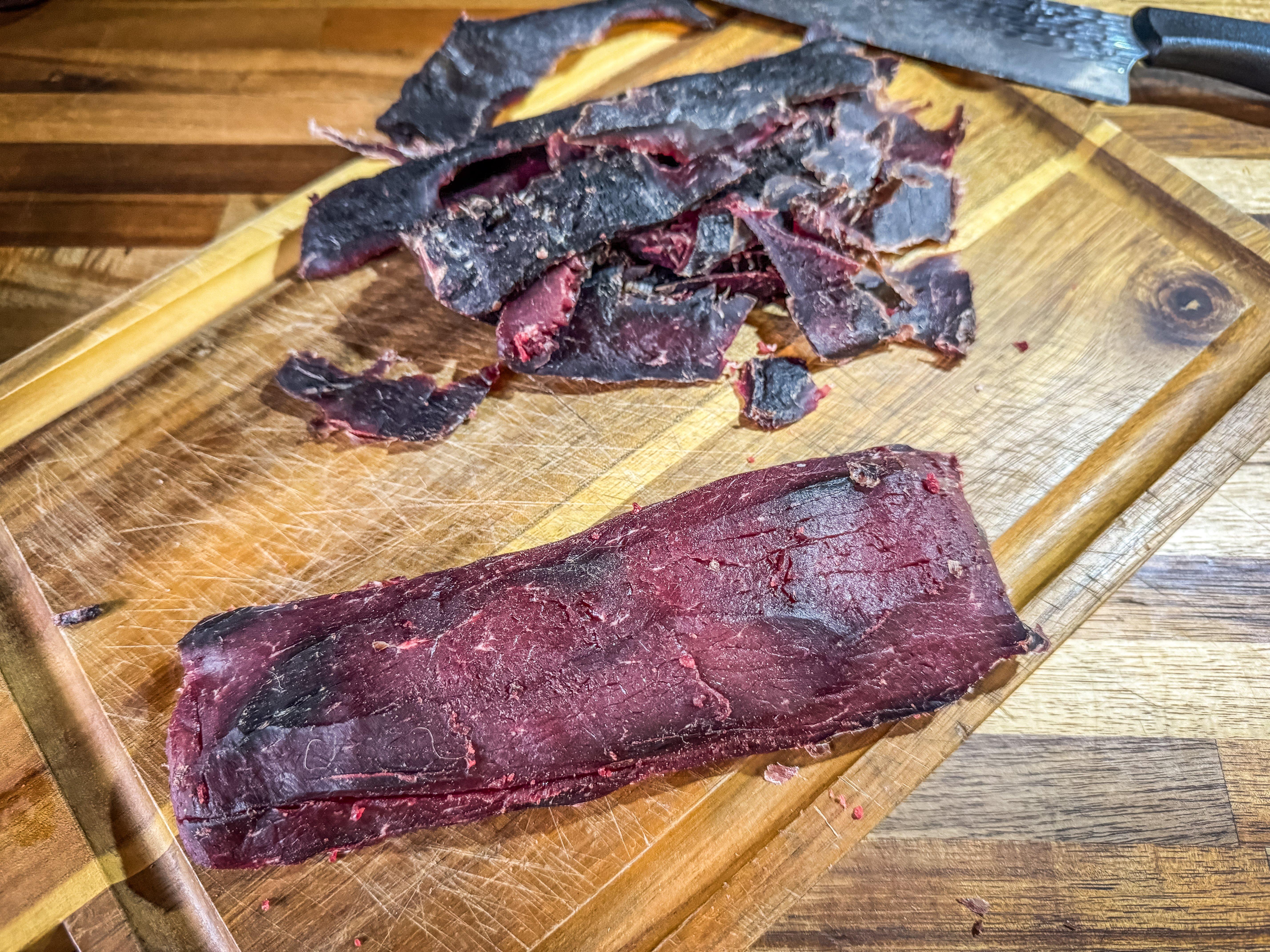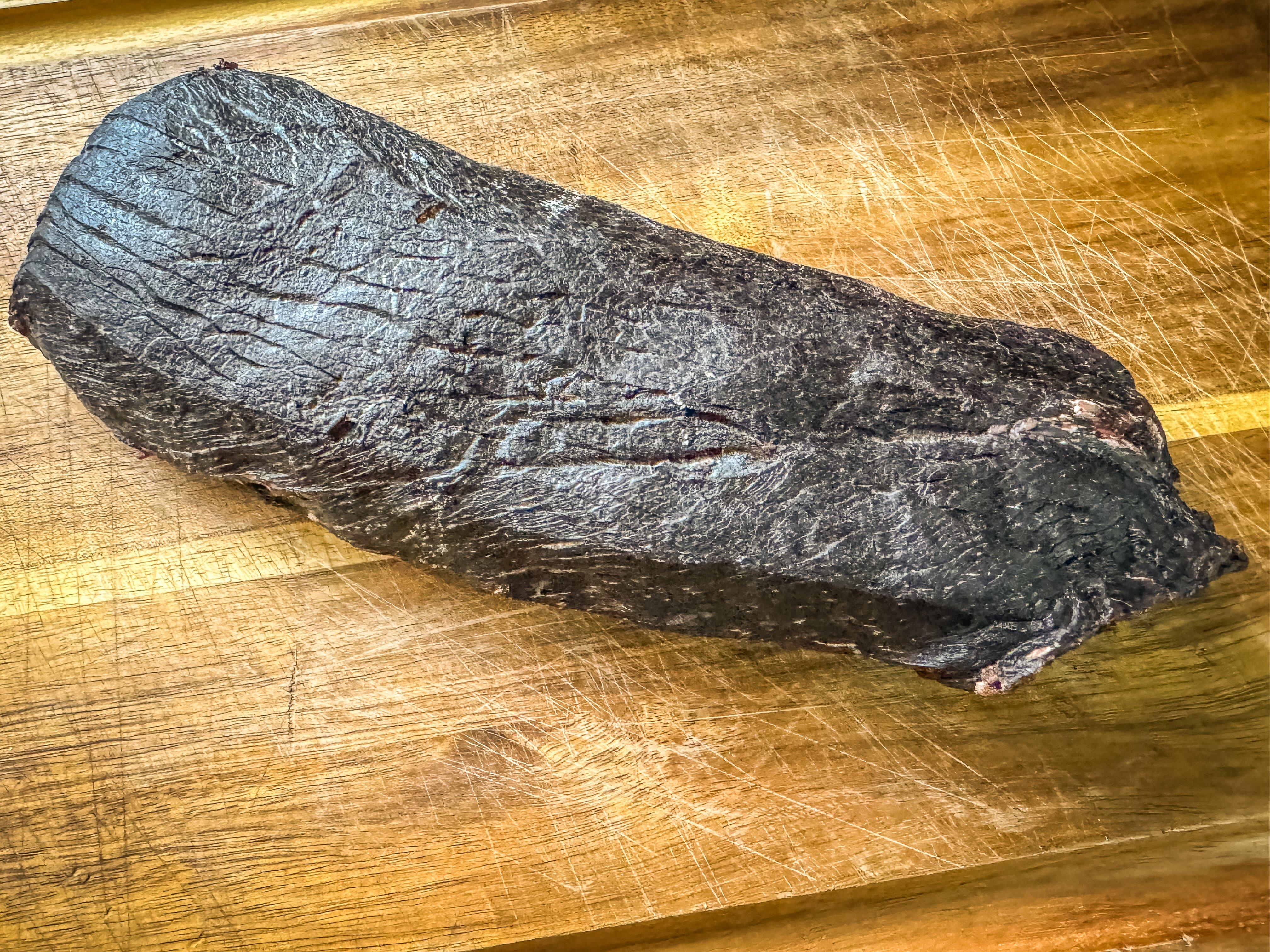Hunters can dry-age their venison at home in any weather with a new unit from the folks at Pro Smoker
14-Day Dry-Aged Backstrap
15 Min
Prep Time
15 Min
Cook Time
2-3
Servings
Easy, Medium
Difficulty
Dry-aging red meat improves both the flavor and texture. First, moisture is drawn out, creating rich, concentrated flavor. The aging process allows natural enzymes to break down the structure of the meat, making it more tender. That’s why many of the finest steakhouses the world over serve only dry-aged beef. It works the same for venison.

Aged venison backstrap packs extra flavor and tenderness into your favorite recipe.
To properly dry-age venison, the temperature should range from 33 to 37 degrees Fahrenheit, and the humidity between 65% and 75%. In a perfect world, hunters would be able to hang their freshly tagged deer for 14-21 days, but unless you have access to a walk-in cooler, it’s hard to meet the requirements to do so safely.
I’ve often wished for a small version of a walk-in cooler for dry-aging steaks and primals from wild game. The folks at Pro Smoker and PS Seasoning must have read my mind because they sent me their new Reserve 50 to test. The unit is a scaled-down version of a walk-in cooler with easily controlled temperature and humidity. It fits conveniently on a table or counter but still holds a whopping 44 pounds of meat, more than enough to do a full quarter or several primals from most wild game.

The Reserve 50 allows precise control of temperature and humidity, crucial to safely age meat.
In addition to dry-aging, the unit also makes the perfect curing chamber for homemade charcuterie. We’ll be using the Reserve 50 to make whole muscle charcuterie like bresaola, prosciutto, coppa, biltong, and others. We’ll also be making ground or diced meat charcuterie like salami, soppressata, and various sausages. Stay tuned for regular “What’s in the Curing Chamber” Timber-2-Table posts throughout the future.
A few benefits of the Reserve 50 include precise control of temperature and humidity that hold rock solid at their settings, constant air flow, easily adjusted racks and hangers for various cuts, an easy-to-clean stainless-steel interior, and a UV light for bacteria control. Dimensions are 26.7 inches high by 17 inches wide by 19.7 inches deep, and the unit runs off standard 110 volt current.
For the initial test run, I dry-aged a backstrap roast from a large doe I’d taken earlier in the season. I weighed the roast on a digital scale so I could measure moisture loss and trim weight. A good digital scale and accurate note taking are going to be required for proper charcuterie making, so it's a good habit to get into.
When you dry-age meat, the surface gets darker and hard to the touch, almost like jerky. To cook the meat, you first need to trim that surface away. I aged the backstrap for 14 days. For small cuts like this, that seems to be a good balance between getting good flavor and tenderness without losing too much to trim.

Trim the hard outer layer away before cooking.
The backstrap roast weighed 482 grams before aging. It went in at 35 degrees and 77% to 78% humidity.

The roast weighed 482 grams before aging.
After aging for 14 days in the chamber and before trimming, it weighed 304 grams for about a 37% weight loss. Most of that weight loss was water, making the flavor more concentrated after aging.

As the meat ages, moisture loss concentrates the flavor as enzymes help to tenderize.
After trimming, the roast weighed in at 187 grams. This means it lost a whopping 60% of its original weight. Because of this, I don’t recommend doing anything smaller than a backstrap roast. The larger the cut, the smaller the percentage of loss. And don’t come after me for the metric units. Trust me, when you start figuring percentages of salt, cure, and other ingredients in your charcuterie, metric will be much easier to accurately measure.

After aging, the roast came in at 304 grams from moisture loss.
To cook the backstrap, I wanted to do something simple so that the flavor of the aged venison would be the shining star. A simple pan sear with brown butter is just the ticket. Add just a bit of flavor by tossing a few garlic cloves, thyme, and a sprig of fresh rosemary to the butter as you baste the venison.

Sear the backstrap, then baste in herbed butter.
Pat the steaks dry and season on both sides with salt and freshly ground black pepper. Allow the backstrap to rest while you heat a skillet to medium high. Add the butter. Once the butter starts to brown, add the steaks to the pan, searing for 2-3 minutes on the first side without moving. Add the garlic and rosemary. Once you flip the steaks, move them to the side of the skillet away from you. Tilt the skillet down so that the butter pools in the side away from the meat. Continuously spoon the butter over the meat as it sears on the reverse side for an additional 2-3 minutes or to your desired doneness.

Baste the backstrap by spooning over butter as the steaks cook.
Rest the steaks for 3-5 minutes, then spoon a bit of the browned butter over the meat just before serving.
Now for the question of the day. Did dry-aging change the backstrap? It did. The flavor was outstanding, rich, almost nutty. While backstrap is normally tender, this one was exceptionally so, easily cutting with just a fork. Maybe some of the best venison I’ve had in some time. Even if you don’t plan to make your own charcuterie, the Reserve 50 is perfect for aging roasts or quarters from any wild game or even fish.
Ingredients
Dry-aged venison backstrap, cut into 1-inch steaks
3 tablespoons butter
3 garlic cloves, peeled and lightly smashed
2-3 sprigs fresh thyme
1 large sprig fresh rosemary
Salt and pepper








